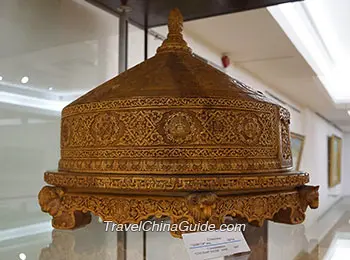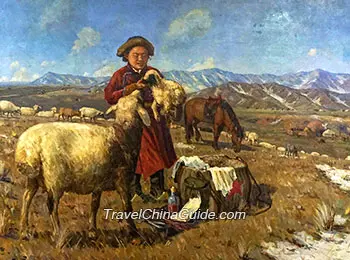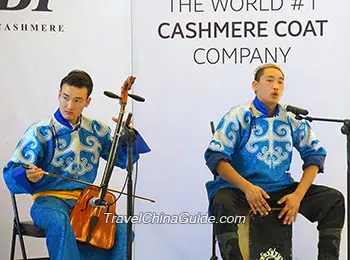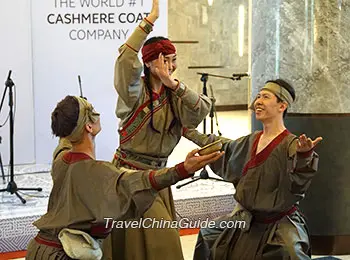Traditional Mongolian Arts: Music, Dancing, Craft & Painting
The art and culture of the Mongolians have been heavily influenced by the nomadic lifestyle. The traditional music, dance, and culture have been influenced by settlers who came here from different parts of Asia and Europe. Among them, Soviet, Chinese, Tibetan influences in the Mongolian arts is very prominent.
The culture has been passed down from one generation to another, and have left a deep impact in the traditional Mongolian life. With extraordinary craftsmanship and intricate finesse, these nomadic herders have been creating astonishing artifacts from the mundane.
See more about 6 Things to Learn about Mongolian People
See more about 6 Things to Learn about Mongolian People
Mongolian Craftsmanship
• Metal artifacts
• Applique and ornaments of leather
• Artistic wood carvings
• Casting from these metals
• Gold and silver chasing
• Sculpture
• Raised inscriptions and embroidery
• Applique and ornaments of leather
• Artistic wood carvings
• Casting from these metals
• Gold and silver chasing
• Sculpture
• Raised inscriptions and embroidery
One thing to note here is that, the Mongolian artists have been creating beautiful and delicate looking wooden carvings from centuries. The ancient wood processing techniques assisted in the preservation of the wood – increasing its life many folds. Some of the popular wooden handicrafts made from many generations include traditional Mongolia Ger or the folk instrument Morin Khuur. The detailed and intricate handling of wood shows advanced skills of the artist.
|
|
Fine Art in Mongolia
From 16th to 20th century, a big portion of the Mongolian arts, especially fine arts, were based on the religious themes. The main source of inspiration for these paintings were religious texts. Thangkas or the Buddhist themed paintings used a special applique technique that made the paintings attractive.
However, post 20th century, the artists opted for a more realistic style of painting. But, the Mongol zurag (traditional thangka paintings on nationalist or secular themes) as well as socialist realism style of painting became popular during the era of Mongolian People's Republic.
Tsevegjav brought modernism revolution in the Mongolian art and culture with his painting called Ehiin setgel.
Music in Mongolia
The throat-singing is very popular among the locals, and long end notes and pentatonic harmonies are some of the main characteristic of this style. Some of the songs performed in this style of singing are almost 800 years old.
|
|
Dancing in Mongolia
Some other forms of dances include Tsam dance (religious mask dance) performed by the Buddhist monks to appease the gods. Also, Zakhchins, Derbets, and Torguts dance (dance of balancing cups on the head, hand, or shoulder) was once very popular in the countryside. However, these dance forms have slowly went into oblivion.
The Mongolian arts and culture have their roots in the Buddhist teaching and literature. However, post 20th century, art took on a more secular and nationalistic turn. Overall, the country is rich in the artistic heritage that must be observed upfront.
- Last updated on Aug. 13, 2025 by Gabby Li -



